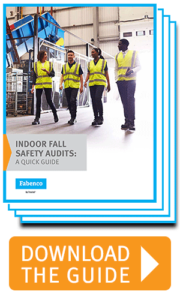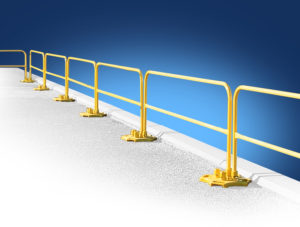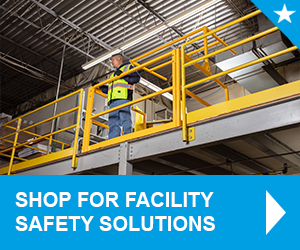
The importance of workplace safety is indisputable, particularly in the construction industry. Because of the vast array of options from which safety officers and other construction officials can choose fall prevention systems for their worksites, it is difficult to understand which system is ideal for a particular location. When choosing the perfect construction fall protection for your needs, it is crucial that you first understand what makes a system OSHA-compliant, and why compliance is important.
Do I have to provide fall protection?
The Employer’s Duty
Safety on and around potential fall hazards may seem like common sense. You may feel that your workers know how to safely operate around potential fall hazards, or that fall protection systems are a waste of your company’s time and money. However, the Occupational Safety and Health Administration (OSHA) has recognized several fall hazards common to active construction sites and established regulations that must be followed when these hazards are present on a worksite.
OSHA requires supervisors to provide adequate construction fall protection in locations where potential fall hazards may exist. 29 CFR 1926.501 explains that it is the duty of the employer to determine whether a walking or working surface has both the strength and the structural integrity necessary to safely support employees, and bars employees from walking or working on surfaces until they meet these requirements.
Identifying Potential Fall Hazards
1926 also outlines the walking and working surfaces employers must address for adequate protection from potential fall hazards. Some of the fall hazards most common to construction sites include:
- unprotected sides and edges, or leading edges
- holes (including, but not limited to, skylights)
- ramps, runways, and other walkways
- low-slope roofs
- steep roofs
- wall openings
- dangerous equipment (open drive belts, pulleys, open vats of acid, etc.)
If your construction worksite includes any of these potential fall hazards, you are required by law to provide adequate, OSHA-compliant fall protection systems as necessary. The general rule of thumb is the “6-foot rule:” the use of fall protection is required when working at heights of 6 feet or more above a lower level.
OSHA Non-Compliance: Penalties and Consequences
Understanding and adhering to government safety regulations on work sites helps prevent serious harm to your workers, equipment, and the project. Non-compliance with these standards not only subjects your crews to potentially serious danger, it may result in costly fines, settlements, compensations, and even the suspension of progress on a construction project until a problem is corrected. The maximum penalties for violating OSHA standards (as of January 23, 2019) are:
- $13,260 per instance for serious and other-than-serious violations, or non-compliance with posting requirements
- $13,260 per day that an issue has not been addressed beyond the abatement date of a violation
- $132,598 per instance for repeated and/or willful violations
Choosing the Right Construction Fall Protection
29 CFR 1926.502 states, “Employers shall provide and install all fall protection systems required by this subpart for an employee, and shall comply with all other pertinent requirements of this subpart before that employee begins the work that necessitates the fall protection.” This section goes on to provide the criteria used to determine compliance with OSHA’s standards for fall protection systems. OSHA recognizes a number of conventional systems that may be employed in the construction industry for fall prevention and protection, such as personal a fall arrest harness, guardrails, and safety nets.
Personal Fall Arrest Systems
This category of safety equipment is used to stop an employee in a fall from a walking or working surface on a construction site. A complete personal fall arrest system (29 CFR 1926.502(d)) consists of:
1. Anchorage and anchorage connectors (tie-off points) that facilitate a connection between an anchorage and a worker,
2. Bodywear, such as construction safety harnesses, that distribute the forces of the fall arrest over at the least the shoulders, chest, waist, pelvis, and thighs of the worker, and that allows for a connection to anchorage, and,
3. Connecting device(s), like lifelines, that provides the direct connection between the anchorage and the body wear.
When considering construction safety harnesses, it is important to remember some crucial guidelines as established by OSHA. An OSHA-compliant personal fall arrest harness must:
- limit the maximum force of the fall arrest on the worker to 1,800 pounds
- limit the distance a worker may free fall to no more than 6 feet
- limit the deceleration distance of a falling worker to no more than 3.5 feet
- prevent contact with a lower surface
- be inspected for wear, damage, and deterioration prior to each use
- bring a falling worker to a complete stop
- facilitate the arrest of a fall without contacting the falling worker’s neck or chin
Safety Harness Lanyards
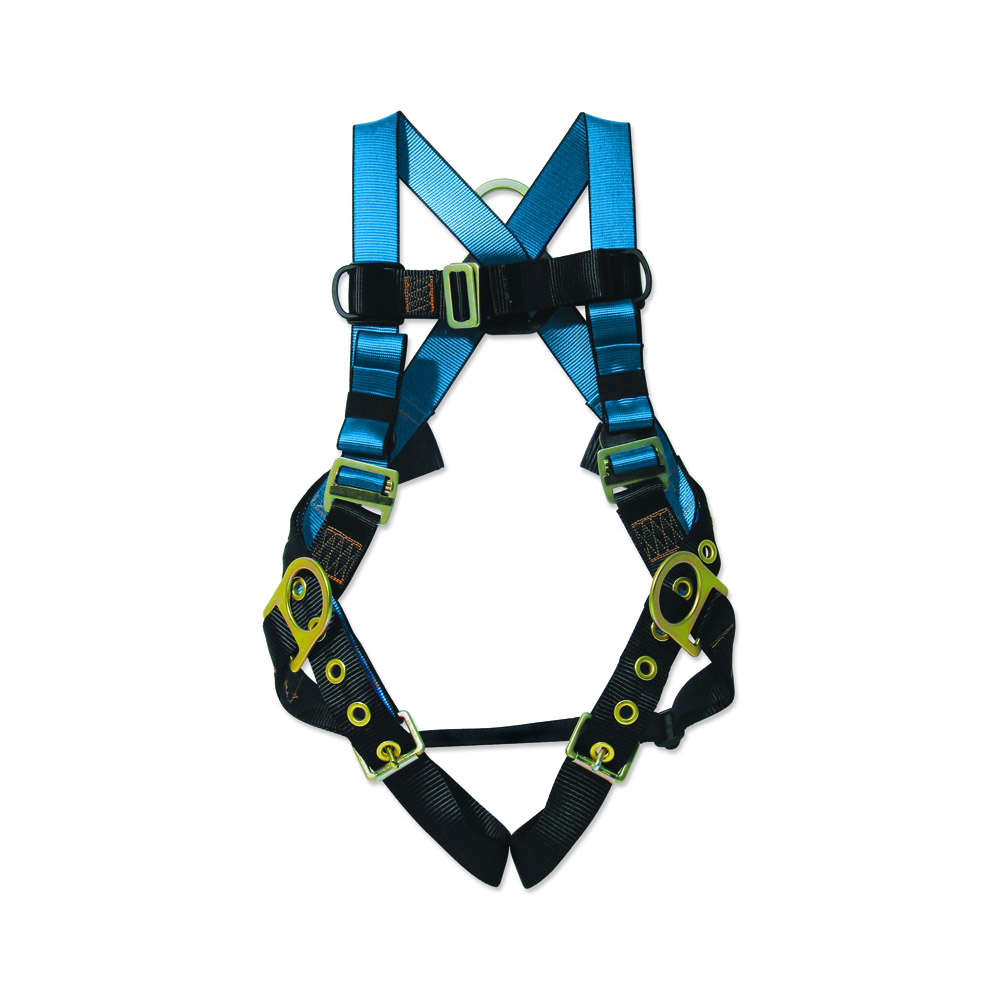
Guardrails
Guardrails (29 CFR 1926.502(b)) are another accepted fall prevention/fall protection system accepted by OSHA when constructed and employed according to their regulations. For a guardrail to meet OSHA’s standards, it must:
be 42 inches (±3 inches) above the working or walking surface, at the rail’s top edge
- include mid-rails, screens, mesh, or similar structural components between the top rail and the walking or working surface when there are no wall or parapet at least 21 inches high present
- be capable of withstanding at least 200 pounds of force, applied in any outward or downward direction within 2 inches of the rail’s top edge
- be surfaced so as to prevent puncturing or laceration of an employee, or snagging of clothing
- consist of top rails and mid-rails (if applicable) with a thickness of at least one quarter inch
Safety Gates
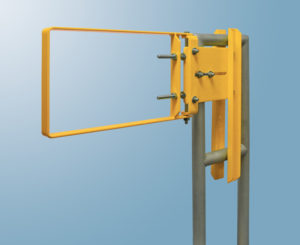
Fall prevention and protection systems are essential to workplace safety, especially in the construction industry. Ensure your work site meets OSHA standards and regulations to prevent injury to your employees and damage to your equipment, and to ensure the smooth and safe operation of your company.
For over four decades, Fabenco has been a leading designer and manufacturer of passive fall protection products and systems. We provide a vast selection of American-made, OSHA-compliant fall protection equipment, including custom safety gates, to perfectly fit your individual safety needs. For more information on implementing fall protection systems that comply with federal safety regulations and don’t cost a fortune, contact us today!





